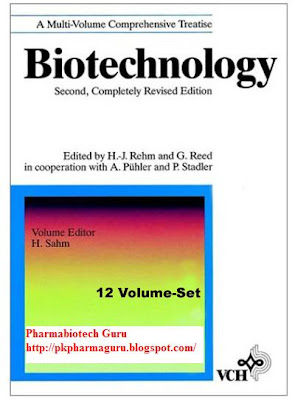17th June 2011
Friday 04:17 PM
The Bible of Pharmacy as we used to talk about this most valuable book.Its none other than "Remington - The Science and Practice of Pharmacy." I still remember my days of B.Pharm. (1980 - 1984), it was a proud to be the owner of this book in those days.
Download Link: http://www.fileserve.com/file/ktg9gQw
or
Download Link: http://www.filesonic.in/file/30460621/
Remington -The Science and Practice of Pharmacy:
For over 100 years, Remington has been the definitive textbook and reference on the science and practice of pharmacy. This Twenty-First Edition keeps pace with recent changes in the pharmacy curriculum and professional pharmacy practice. More than 95 new contributors and 5 new section editors provide fresh perspectives on the field. New chapters include pharmacogenomics, application of ethical principles to practice dilemmas, technology and automation, professional communication, medication errors, re-engineering pharmacy practice, management of special risk medicines, specialization in pharmacy practice, disease state management, emergency patient care, and wound care. A must-have resource for all in the pharmaceutical industry!
Contents:
I. Orientation
Scope of Pharmacy
Evolution of Pharmacy
Ethics and Professionalism
The Practice of Community Pharmacy
Pharmacists in Industry
Pharmacists in Government
Pharmacists and Public Health
Information Resources in Pharmacy and the Pharm. Sciences
Clinical Drug Literature
Research
II. Pharmaceutics
Metrology and Pharmaceutical Calculations
Statistics
Molecular Structure, Properties, and States of Matter
Complex Formation
Thermodynamics
Solutions and Phase Equilibria
Ionic Solutions and Electrolytic Equilibria
Tonicity, Osmoticity, Osmolality, and Osmolarity
Chemical Kinetics
Interfacial Phenomena
Colloidal Dispersions
Coarse Dispersions
Rheology
III. Pharmaceutical Chemistry
Inorganic Pharmaceutical Chemistry
Organic Pharmaceutical Chemistry
Natural Products
Drug Nomenclature—United States Adopted Names
Structure-Activity Relationship and Drug Design
Fundamentals of Medical Radionuclides
IV. Pharmaceutical Testing, Analysis and Control
Analysis of Medicinals
Biological Testing
Clinical Analysis
Chromatography
Instrumental Methods of Analysis
Dissolution
V. Pharmaceutical Manufacturing
Separation
Powders
Property-Based Drug Design and Preformulation
Solutions, Emulsions, Suspensions and Extracts
Sterilization
Parenteral Preparations
Intravenous Admixtures
Ophthalmic Preparations
Medicated Topicals
Oral Solid Dosage Forms
Coating of Pharmaceutical Dosage Forms
Extended-Release and Targeted Drug-Delivery Systems
The New Drug Approval Process and Clinical Trial Design
Biotechnology and Drugs
Aerosols
Quality Assurance and Control
Stability of Pharmaceutical Products
Bioavailability and Bioequivalency Testing
Plastic Packaging Materials
Pharmaceutical Necessities
VI. Pharmacodynamics
Diseases: Manifestations and Pathophysiology
Drug Absorption, Action and Disposition
Basic Pharmacokinetics and Pharmacodynamics
Clinical Pharmacokinetics and Pharmacodynamics
Principles of Immunology
Adverse Drug Reactions and Clinical Toxicology
Pharmacogenomics
Pharmacokinetics/Pharmacodynamics in Drug Development
VII. Pharmaceutical and Medicinal Agents
Diagnostic Drugs and Reagents
Topical Drugs
Gastrointestinal and Liver Drugs
Blood, Fluids, Electrolytes and Hematological Drugs
Cardiovascular Drugs
Respiratory Drugs
Sympathomimetic Drugs
Cholinomimetic Drugs
Adrenergic Antagonists and Adrenergic Neuron Blocking Drugs
Antimuscarinic and Antispasmodic Drugs
Skeletal Muscle Relaxants
Diuretic Drugs
Uterine and Antimigraine Drugs
Hormones and Hormone Antagonists
General Anesthetics
Local Anesthetics
Antianxiety Agents and Hypnotic Drugs
Antiepileptic Drugs
Psychopharmacologic Agents
Analgesic, Antipyretic, and Anti-inflammatory Drugs
Histamine and Antihistaminic Drugs
Central Nervous System Stimulants
Antineoplastic Drugs
Immunoactive Drugs
Parasiticides
Immunizing Agents and Allergenic Extracts
Anti-Infectives
Enzymes
Nutrients and Associated Substances
Pesticides
VIII. Pharmacy Practice
Fundamentals of Pharmacy Administration
Applications of Ethical Principles to Practice Dilemmas
Technology and Automation
The Patient: Behavioral Determinants
Patient Communication
Patient Compliance
Drug Education
Professional Communications
The Prescription
Providing a Framework for Ensuring Medication Use Safety
Poison Control
Drug Interactions
Extemporaneous Prescription Compounding
Nuclear Pharmacy Practice
Nutrition in Pharmacy Practice
Pharmacoepidemiology
Surgical Supplies
Health Accessories
Social, Behavioral, andEconomic, and Administrative Sciences
Laws Governing Pharmacy
Re-engineering Pharmacy Practice
Pharmacoeconomics
Community Pharmacy Economics and Management
Product Recalls and Withdrawals
Marketing Pharmaceutical Care Services
Documenting, Billing, and Reimbursement for Pharmaceutical Care Services
Pharmaceutical Risk Management
Integrated Health Care Delivery Systems
Patient Care
Specialization in Pharmacy Practice
Pharmacists and Disease State Management
Development of a Pharmacy Care Plan and Patient Problem-Solving
Ambulatory Patient Care
Self-Care
Diagnostic Self-Care
Preventive Care
Hospital Pharmacy Practice
Emergency Medicine Pharmacy Practice
Long-Term Care
Aseptic Processing for Home Infusion Pharmaceuticals
The Pharmacist’s Role in Substance Use Disorders
Complementary and Alternative Medical Health Care
Chronic Wound Care
Index


































